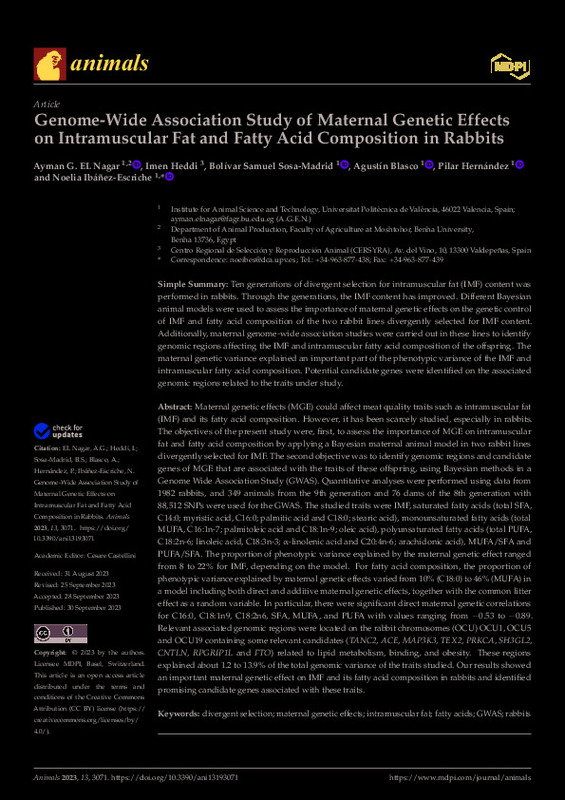JavaScript is disabled for your browser. Some features of this site may not work without it.
Buscar en RiuNet
Listar
Mi cuenta
Estadísticas
Ayuda RiuNet
Admin. UPV
Genome-Wide Association Study of Maternal Genetic Effects on Intramuscular Fat and Fatty Acid Composition in Rabbits
Mostrar el registro completo del ítem
El Nagar, AG.; Heddi, I.; Sosa-Madrid, BS.; Blasco Mateu, A.; Hernández, P.; Ibáñez-Escriche, N. (2023). Genome-Wide Association Study of Maternal Genetic Effects on Intramuscular Fat and Fatty Acid Composition in Rabbits. Animals. 13(19). https://doi.org/10.3390/ani13193071
Por favor, use este identificador para citar o enlazar este ítem: http://hdl.handle.net/10251/203665
Ficheros en el ítem
Metadatos del ítem
| Título: | Genome-Wide Association Study of Maternal Genetic Effects on Intramuscular Fat and Fatty Acid Composition in Rabbits | |
| Autor: | El Nagar, Ayman G. Heddi, Imen | |
| Entidad UPV: |
|
|
| Fecha difusión: |
|
|
| Resumen: |
[EN] Maternal genetic effects (MGE) could affect meat quality traits such as intramuscular fat (IMF) and its fatty acid composition. However, it has been scarcely studied, especially in rabbits. The objectives of the present ...[+]
|
|
| Palabras clave: |
|
|
| Derechos de uso: | Reconocimiento (by) | |
| Fuente: |
|
|
| DOI: |
|
|
| Editorial: |
|
|
| Versión del editor: | https://doi.org/10.3390/ani13193071 | |
| Código del Proyecto: |
|
|
| Agradecimientos: |
The work was funded by the Spanish Ministry of Science and Innovation, project number PID2020-115558GB-C21, and by the Conselleria for Innovation, Universities, Science and Digital Society, project number AICO/2020/349. ...[+]
|
|
| Tipo: |
|









